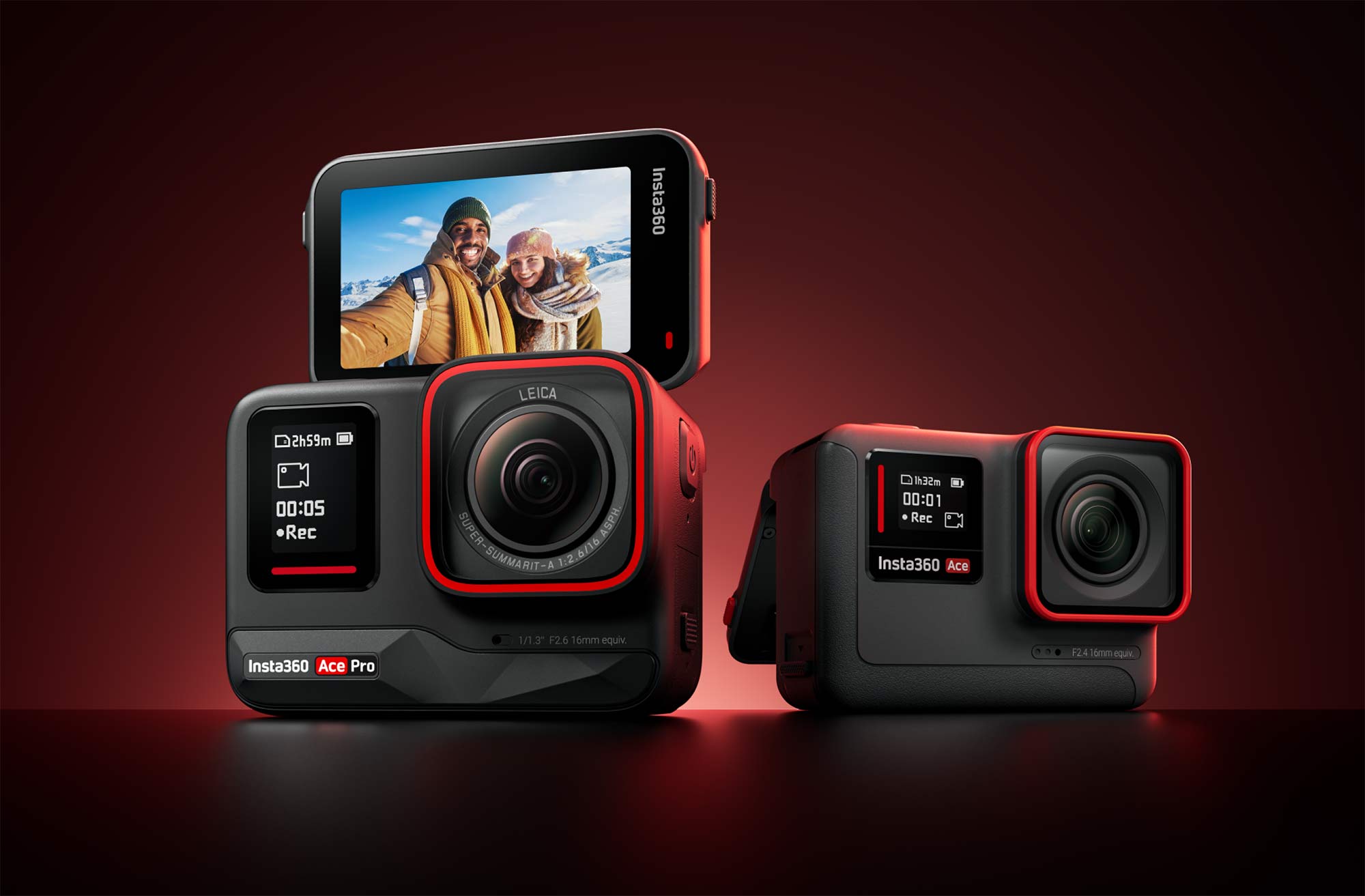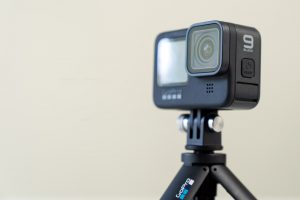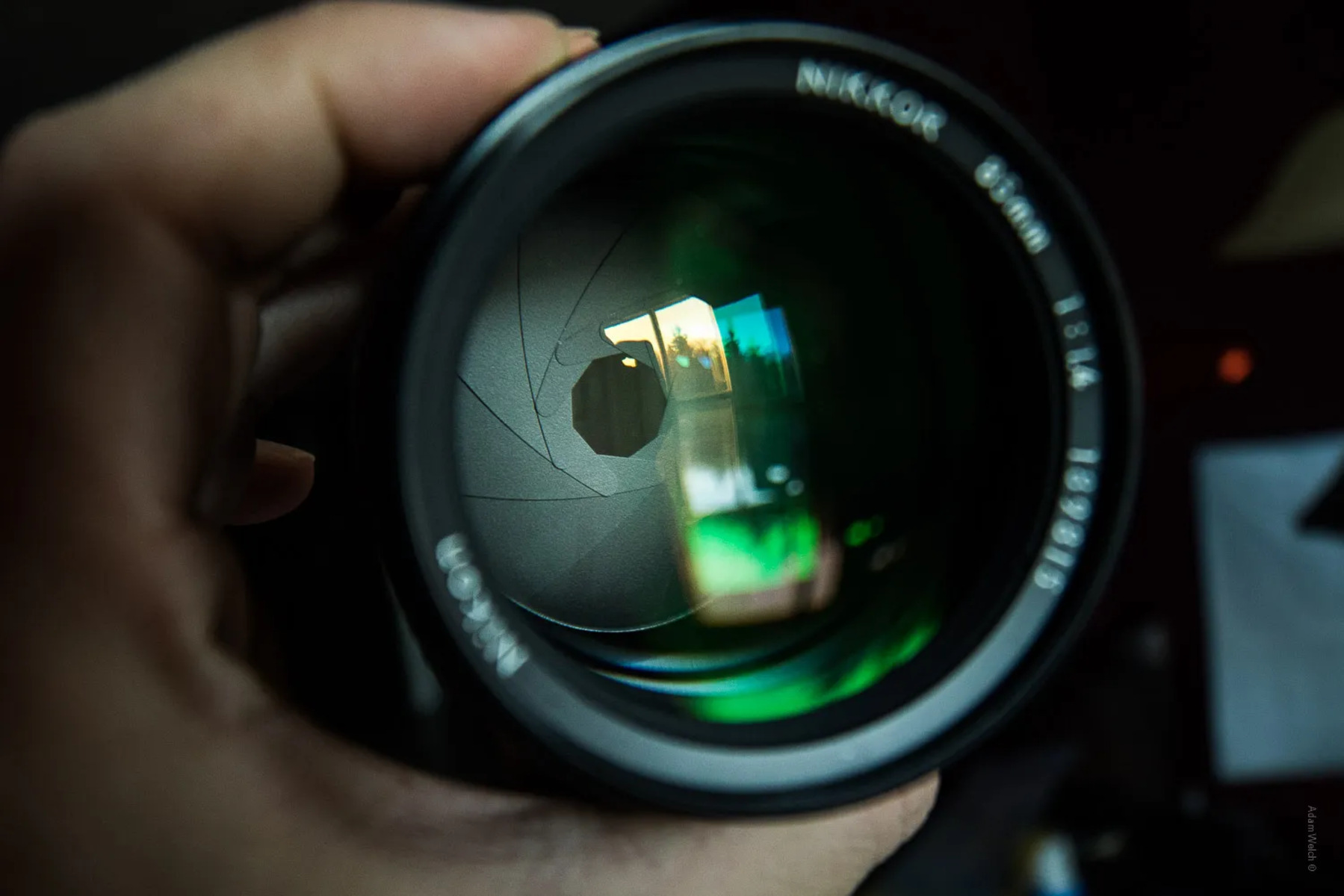Introduction
Action cameras and traditional cameras serve distinct purposes, each catering to specific needs and preferences. Understanding the differences between the two can help individuals make informed decisions when choosing the right camera for their activities and projects. Whether capturing high-octane adventures or immortalizing cherished moments, the disparity between action cameras and traditional cameras becomes evident in various aspects, including size and portability, durability and weather resistance, mounting options, image stabilization, field of view, battery life, connectivity and sharing options, as well as price and value.
The evolution of technology has significantly transformed the way we capture and share experiences. Action cameras have gained immense popularity due to their compact size, rugged build, and ability to record high-definition footage in extreme conditions. On the other hand, traditional cameras, including DSLRs and mirrorless cameras, boast superior image quality and versatility, making them ideal for professional photography and videography.
As we delve into the nuances of action cameras versus traditional cameras, it's important to recognize that both have their strengths and limitations. By exploring the unique features and functionalities of each, individuals can pinpoint the most suitable option based on their specific requirements and preferences. Whether it's the thrill of outdoor adventures, the art of storytelling through visuals, or the convenience of capturing life's everyday moments, the disparity between action cameras and traditional cameras becomes apparent, setting them apart in the realm of photography and videography.
Size and Portability
Action cameras are renowned for their compact and lightweight design, making them exceptionally portable and easy to carry during various activities. Typically, these cameras are small enough to fit in the palm of a hand, allowing users to mount them on helmets, bikes, or other gear without adding significant bulk or weight. This portability is a defining feature, enabling adventurers and sports enthusiasts to capture dynamic footage without being encumbered by heavy equipment.
In contrast, traditional cameras, such as DSLRs and mirrorless cameras, are bulkier and less convenient for on-the-go use. While they offer exceptional image quality and versatility, their larger size and weight can be cumbersome, particularly during outdoor excursions or fast-paced activities. Carrying additional lenses and accessories further adds to the overall bulk, limiting the ease of mobility.
The difference in size and portability between action cameras and traditional cameras underscores their distinct intended uses. Action cameras prioritize convenience and unobtrusiveness, allowing users to focus on their activities while effortlessly capturing footage. Conversely, traditional cameras excel in controlled environments where image quality and creative control take precedence over portability.
Ultimately, the size and portability of a camera play a pivotal role in determining its suitability for specific scenarios. Whether embarking on adrenaline-fueled escapades or engaging in professional photography, the compact nature of action cameras and the substantial build of traditional cameras cater to divergent needs, emphasizing the importance of portability in the realm of photography and videography.
Durability and Weather Resistance
Action cameras are engineered to withstand rugged conditions, making them exceptionally durable and resilient. These cameras are often designed to be waterproof, shockproof, and resistant to dust and extreme temperatures. Such robust construction enables them to thrive in challenging environments, including underwater exploration, high-velocity sports, and off-road adventures. The ability to endure harsh conditions ensures that action cameras remain operational and reliable, even in the midst of demanding activities.
Conversely, traditional cameras may lack the same level of inherent durability and weather resistance. While certain models feature weather-sealing and rugged construction, they generally require additional protective housing to achieve the level of resilience inherent in action cameras. This supplementary gear adds bulk and complexity, potentially impeding the spontaneity and agility required for dynamic shooting scenarios.
The disparity in durability and weather resistance between action cameras and traditional cameras underscores their divergent suitability for various environments and activities. Action cameras thrive in the face of adversity, empowering users to capture compelling footage in conditions that would compromise conventional cameras. On the other hand, traditional cameras excel in controlled settings where environmental factors pose minimal risk, allowing for meticulous composition and nuanced creativity.
Ultimately, the durability and weather resistance of a camera directly influence its adaptability to different shooting conditions. Whether braving the elements in outdoor pursuits or navigating controlled studio environments, the robust build of action cameras and the nuanced vulnerability of traditional cameras cater to distinct needs, emphasizing the significance of durability and weather resistance in the realm of photography and videography.
Mounting Options
Action cameras are revered for their versatility in mounting options, offering a myriad of accessories and mounting systems to facilitate creative and dynamic perspectives. These cameras are designed to be easily affixed to helmets, handlebars, chest harnesses, and various other equipment, enabling users to capture immersive and hands-free footage from unique vantage points. The extensive array of mounting options empowers adventurers and content creators to experiment with diverse angles and viewpoints, adding a layer of excitement and engagement to their visual storytelling.
In contrast, traditional cameras typically have more limited mounting options, often requiring specialized rigs or stabilizing equipment to achieve similar perspectives. While traditional cameras offer superior image quality and creative control, their mounting capabilities may be constrained by their bulkier form factor and the need for additional accessories to enable unconventional mounting.
The disparity in mounting options between action cameras and traditional cameras underscores their distinct strengths in capturing dynamic footage. Action cameras excel in facilitating seamless and inventive mounting solutions, enabling users to effortlessly integrate their cameras into various activities and environments. Conversely, traditional cameras prioritize image quality and artistic control, necessitating more deliberate and structured setups to achieve comparable perspectives.
The availability of mounting options directly influences the versatility and creativity of visual storytelling. Whether capturing high-octane action sequences or crafting meticulously composed shots, the adaptability of action cameras and the deliberate setup of traditional cameras cater to diverse shooting styles and objectives, emphasizing the significance of mounting options in the realm of photography and videography.
Image Stabilization
Action cameras are equipped with advanced image stabilization technology to mitigate the effects of motion and vibration during dynamic activities. This feature ensures that footage remains smooth and steady, even in the face of rapid movement and environmental disturbances. Whether biking along rugged trails or skiing down challenging slopes, the robust image stabilization of action cameras enhances the overall viewing experience by delivering visually compelling and stable footage.
Conversely, while some traditional cameras also offer image stabilization capabilities, the effectiveness of this feature may vary depending on the model and lens used. The bulkier nature of traditional cameras can inherently pose challenges in maintaining stable footage during agile movements, necessitating additional stabilization equipment or techniques to achieve comparable results.
The disparity in image stabilization between action cameras and traditional cameras underscores their distinct suitability for capturing dynamic motion. Action cameras prioritize seamless and reliable stabilization, enabling users to effortlessly record smooth and immersive footage during high-energy activities. Traditional cameras, on the other hand, excel in meticulously composed shots and controlled environments, where stability can be meticulously managed and optimized.
The presence of robust image stabilization directly impacts the quality and impact of captured footage. Whether documenting fast-paced adventures or orchestrating deliberate cinematic sequences, the stability and smoothness afforded by action cameras and the deliberate stabilization methods of traditional cameras cater to diverse visual storytelling needs, emphasizing the significance of image stabilization in the realm of photography and videography.
Field of View
Action cameras are renowned for their wide field of view, capturing expansive scenes and dynamic action with remarkable clarity and immersion. This wide-angle perspective allows users to encapsulate the full breadth of their surroundings, making action cameras particularly well-suited for adventure sports, scenic landscapes, and immersive storytelling. The expansive field of view enhances the sense of presence and dynamism in captured footage, delivering an engaging and encompassing visual experience.
Conversely, traditional cameras offer varying field of view depending on the lens used, with the ability to capture scenes in standard, wide, or telephoto perspectives. While traditional cameras provide versatility in adjusting the field of view based on specific creative requirements, achieving the wide-angle coverage inherent in action cameras may necessitate specialized wide-angle lenses or panoramic techniques.
The disparity in field of view between action cameras and traditional cameras underscores their distinct strengths in capturing visual narratives. Action cameras excel in delivering immersive and encompassing perspectives, ideal for conveying the expansive energy and dynamism of action-packed scenarios. Traditional cameras prioritize versatile field of view options, allowing for nuanced composition and selective framing to convey specific visual narratives.
The field of view directly influences the visual impact and storytelling capabilities of captured footage. Whether seeking to convey the grandeur of outdoor adventures or craft intricately composed scenes, the expansive perspective of action cameras and the adaptable field of view options of traditional cameras cater to diverse visual storytelling needs, emphasizing the significance of field of view in the realm of photography and videography.
Battery Life
Action cameras are designed to offer extended battery life, providing prolonged usage during outdoor adventures and activities. This feature ensures that users can capture uninterrupted footage without the need for frequent recharging, enhancing the convenience and reliability of action cameras in dynamic settings. The long-lasting battery life of action cameras is particularly advantageous for extended outdoor excursions where access to charging points may be limited.
Conversely, traditional cameras may have varying battery life depending on the model and usage. While some professional-grade traditional cameras offer robust battery performance, others may have more limited endurance, especially when recording high-definition video or utilizing power-intensive features. The need for spare batteries or access to charging facilities becomes more pronounced during extended shoots or remote locations.
The disparity in battery life between action cameras and traditional cameras underscores their distinct suitability for prolonged usage in different scenarios. Action cameras prioritize extended battery life, ensuring continuous recording capabilities during outdoor adventures and high-energy activities. Traditional cameras cater to diverse shooting requirements, with battery life varying based on usage, settings, and the specific demands of the photographic or videographic endeavor.
Battery life directly impacts the operational duration and reliability of a camera. Whether embarking on all-day adventures or orchestrating extensive photo or video sessions, the prolonged endurance of action cameras and the adaptable power management of traditional cameras cater to diverse shooting styles and objectives, emphasizing the significance of battery life in the realm of photography and videography.
Connectivity and Sharing Options
Action cameras are equipped with versatile connectivity features, allowing seamless transfer of media files to various devices for instant sharing and editing. These cameras often integrate Wi-Fi, Bluetooth, and proprietary apps that facilitate quick and convenient sharing of footage across smartphones, tablets, and computers. The accessibility of these connectivity options empowers users to swiftly showcase their adventures and experiences on social media platforms and collaborate on real-time editing projects, enhancing the immediacy and interactivity of content sharing.
In contrast, traditional cameras may offer limited connectivity options, with some models requiring additional adapters or tethering to transfer files to external devices. While professional-grade traditional cameras may feature robust connectivity capabilities, entry-level and mid-range models may have more constrained sharing options, potentially necessitating the use of memory cards or physical transfer methods.
The disparity in connectivity and sharing options between action cameras and traditional cameras underscores their distinct strengths in enabling seamless media sharing and collaboration. Action cameras prioritize user-friendly connectivity, streamlining the process of sharing and editing footage across multiple devices. Traditional cameras cater to a spectrum of connectivity capabilities, with high-end models offering advanced sharing options while entry-level models may require additional steps for media transfer.
Connectivity and sharing options directly influence the accessibility and collaborative potential of captured content. Whether engaging in real-time social sharing during outdoor pursuits or collaborating on professional editing projects, the versatile connectivity of action cameras and the adaptable sharing capabilities of traditional cameras cater to diverse content sharing needs, emphasizing the significance of connectivity and sharing options in the realm of photography and videography.
Price and Value
Action cameras are often priced competitively, offering a cost-effective entry point for individuals seeking to capture high-quality footage during outdoor adventures and dynamic activities. The affordability of action cameras, coupled with their robust features and durability, presents a compelling value proposition for enthusiasts and professionals alike. These cameras provide a budget-friendly avenue for capturing immersive experiences without compromising on essential functionalities.
Conversely, traditional cameras encompass a wide price spectrum, ranging from entry-level models to professional-grade equipment with substantial investment requirements. While traditional cameras offer unparalleled image quality, creative control, and versatility, their higher price points may pose a barrier to entry for individuals seeking budget-friendly solutions for casual or adventure-focused photography and videography.
The disparity in price and value between action cameras and traditional cameras underscores their distinct market positions and value propositions. Action cameras prioritize accessibility and affordability, offering compelling features at competitive price points to cater to a broad demographic of users. Traditional cameras encompass a diverse range of price points, reflecting the varied capabilities and intended uses, from entry-level options for hobbyists to premium models for professional applications.
Price and value directly influence the accessibility and investment considerations associated with camera equipment. Whether seeking a budget-friendly solution for capturing outdoor adventures or investing in a comprehensive system for professional pursuits, the affordability and robust features of action cameras and the diverse price spectrum of traditional cameras cater to a spectrum of user needs, emphasizing the significance of price and value in the realm of photography and videography.
Conclusion
The comparison between action cameras and traditional cameras reveals a nuanced landscape of capabilities, features, and suitability for diverse photographic and videographic endeavors. Action cameras, renowned for their compact and rugged design, excel in capturing immersive and dynamic footage during high-energy activities, offering versatile mounting options, robust image stabilization, and extended battery life. These cameras prioritize accessibility, affordability, and seamless sharing capabilities, making them ideal companions for outdoor enthusiasts, content creators, and adventurers seeking to document their experiences with ease and reliability.
On the other hand, traditional cameras encompass a spectrum of capabilities, from entry-level models to professional-grade equipment, offering unparalleled image quality, creative control, and adaptability. While traditional cameras may have limitations in terms of size, portability, and ruggedness, they shine in controlled environments, allowing for meticulous composition, versatile field of view options, and advanced connectivity and sharing capabilities. The diverse price spectrum of traditional cameras reflects the varied needs of photographers and videographers, catering to hobbyists, enthusiasts, and professionals with distinct value propositions.
Ultimately, the choice between action cameras and traditional cameras hinges on the specific requirements, shooting scenarios, and creative objectives of the user. Whether seeking a compact and durable companion for high-octane adventures or investing in a comprehensive system for professional photography and videography, understanding the nuances of each camera type is essential in making an informed decision. Both action cameras and traditional cameras offer unique strengths and capabilities, catering to a broad spectrum of visual storytelling needs and preferences in the dynamic realm of photography and videography.

























